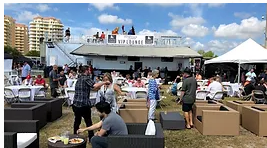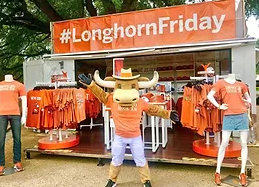An incredible number of Americans take pleasure in the tradition of tailgating by meeting in parking lots prior to major events like athletic contests, concerts, and other large gatherings to generally share food, drink, and good company. Although VIP Lounge is frequently related to modern times, it has a wealthy history that has developed over many years.

In the late 1800s and early 1900s, when college football was becoming increasingly popular, tailgating emerged. Before, spectators would often bring brought the overall game, establishing impromptu banquets in the back of wagons or the trunks of vehicles. The custom of experiencing a feast before a sporting event is called "tailgating," which got its name from the practice of sitting on the tailgate of a wagon or truck while enjoying the buffet.
An even more structured approach was taken to tailgate in early 20th century as due to of the ongoing rise in popularity of American football throughout that same period. Fans began arriving hours before kickoff to setup grills and party in designated tailgating regions of parking lots that schools began setting aside in the 1950s and 1960s. As fans could now watch the overall game from the comfort of their homes through trailers and use the time before and after the overall game to socialize with friends and fellow fans, tailgating culture took off.
Through the 1970s and 1980s, tailgating was a big success at sporting and other events, attracting spectators from all demographics. Portable barbecues, roofdeck, VIP Lounge , and coolers have made throwing a tailgate party easier than ever, so fans is now able to enjoy everything from gourmet fare to craft beer while watching the game.
Thousands of people through the United States participate in this cherished custom each year, demonstrating that tailgating has evolved into an indispensable element of American society. Extreme tailgating fans, referred to as "tailgaters," will spend hundreds or a large number of dollars on supplies to throw the biggest pre-game party.
While to others, tailgate is nothing more than an excuse to consume and drink excessively; the tradition holds significant meaning for many fans. Some people enjoy tailgating as it brings them closer to their friends and neighbors and allows them to savor the fun of planning to sports or other special events. For many, it's a way to remember and celebrate the history of a specific game or event. Also, for many people, it's just an opportunity to relax and enjoy the business of family members in a joyous setting.
As due to of the widespread COVID-19 outbreak, tailgating has been afflicted by new obstacles in recent years. Some venues have established new safety procedures, such as for example mobile tour or mobile trailer with roof deck which have altered traditional tailgating practices. Many huge gatherings have already been canceled or restricted. Despite these obstacles, tailgating continues to be a cherished facet of American culture that will adapt to new circumstances.

In summary, the annals of tailgating as a culture in the United States, in addition to its development over time, is just a topic that is rich and fascinating, and it exemplifies the everlasting spirit of community and sports in the United States. Tailgating has evolved greatly from its early days as a picnic on the rear of a wagon to the lavish parties and celebrations today. Tailgating will remain an important part of American culture for many years, as millions of fans throughout the country continue to take pleasure from this popular ritual.
No comments:
Post a Comment